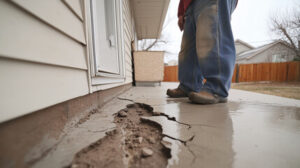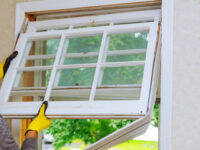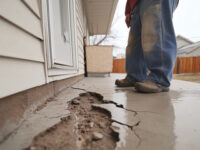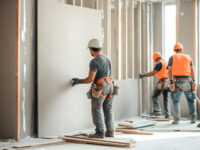The Importance of Foundation Inspections
Plano Foundation Inspections is the process by which a qualified specialist examines your home’s foundation for signs of damage. They look for cracks, separation, sagging, leaning, sticking doors and windows, and sloping floors.
They also check crawl spaces and basements for moisture. They run tests like seeing whether a ball rolls across the floor, and look for other warning signs.
Whether you’re a homebuyer looking at properties or a property owner in the midst of an active renovation project, having your foundation inspected before proceeding is one of the best moves you can make. A thorough inspection conducted by a structural engineer can help you avoid costly repairs down the road and keep your family safe and comfortable in your home.
Foundation inspectors typically begin their work with a walk around the exterior of your home, observing any signs of leaning or bulging that could indicate uneven load distribution on the foundation. They also look for deteriorating concrete, which can cause cracks and damage.
Inside, the basement and crawl spaces are inspected for dampness and any evidence of mold or mildew, both of which can lead to serious water intrusion issues that affect the substructure and eventually impact the interior walls. Inspectors will also check for sloping floors or walls, which can indicate foundation movement and instability. Door or window sticking and squeaking are also red flags that can point to a significant problem.
Any non-structural cracks that are wider than 5-15 cm in length are considered a sign of a potential problem and may need to be repaired. Inspectors will also assess the plumbing for any leaks, as water intrusion is a major contributor to foundation problems. The soil surrounding the house is inspected to see how it slopes, as well. It should be sloping away from the house, rather than toward it. If it’s not, soil erosion and differential settlement can occur.
If the inspector discovers any areas of concern, they’ll suggest ways to fix them. This can include adding soil to low-lying areas or regrading the landscaping around the house to direct water flow away from the foundation. Inspectors will also take note of any previous attempts at repair, assessing the quality and success of those repairs.
During the inspection, inspectors will often use a probe to determine the density of the soil underneath the foundation, which can provide clues about the overall condition of your foundation and its stability. In addition to this, the inspector will look for any signs of seismic activity, including vibrations or a change in floor elevation.
Cracks in the Walls or Floors
When you have a foundation inspection done, an inspector will look for signs of damage and problems. This includes examining cracks in the walls and floors, assessing floor elevations, checking soil moisture levels and conducting load-bearing tests. They may also recommend additional geological testing or structural engineering analysis.
Generally speaking, vertical hairline cracks are usually caused by natural causes like the house settling or by shrinkage of concrete during construction. However, if they become wider than 1/8 inch or appear near the corners of doors and windows, it may be a sign that there is a serious problem with the foundation.
Settling can occur for many reasons, including changes in soil composition or local climate conditions that lead to shifts in moisture content. Landscaping and drainage issues can also contribute to a shifting foundation, as can trees that have grown too close to the building and roots that are pushing against the foundation. In addition, construction activities that disturb the soil can lead to uneven settlement.
While some settling is inevitable, you can reduce the risk of structural problems by having regular foundation inspections. A qualified professional can spot problems early and take steps to correct the issue before it becomes a major problem that costs a lot of money to repair.
A good inspection will start with a thorough visual examination of the outside of the home, looking for signs that indicate a shifting foundation. They will then move inside and examine the floors, ceilings, and walls for cracking, separating, buckling, or warping. They will also check the condition of piers, beams and joists, which can impact how well your foundation is holding up your house.
They will also look for any signs that the foundation is leaking, such as wet or musty basements, or sagging, uneven, or stuck doors and windows. Any of these signs can indicate a serious problem with the foundation and need to be addressed as soon as possible to prevent further damage or safety risks for your tenants. A thorough foundation inspection can help you avoid costly repairs and make sure your rental property is safe for your tenants.
Leaky Gutters or Siding
A foundation inspection is a must if you’re constructing a new home or working on a remodeling project. Skipping a foundation check can lead to serious problems that will cost more money and time to fix later. A foundation inspector is a professional who looks for the signs of structural damage and assesses the condition of a property’s foundation.
During the inspection, professionals start by walking the exterior of the property. They look for areas that bulge, as these indicate uneven loads on the substructure walls. They also check for any cracks, fissures, or settling. Standing water around the foundation is another indicator of problems, so they may also look for damp spots or seepage.
Then they move to the interior of the house. The specialists will check the walls and scan for cracks or separation. They will also check the floors and ceilings for any buckling or sagging. They might even use simple tests to determine whether a ball rolls easily on the floor. They will also check windows and doors to ensure they open and close correctly.
If the house has undergone any previous repairs, the specialists will review the quality of those repairs. They will also inspect any landscaping and drainage systems, looking for issues that could affect the foundation’s stability and condition. For example, poor drainage can cause water to pool near the foundation, leading to settling and cracking. Additionally, large trees planted too close to the house can damage the foundation by pushing against it.
Once the experts finish the walk-through, they will write up a comprehensive report detailing any issues and recommended solutions. They might also recommend a structural engineer’s involvement, if necessary. The report is then read by construction managers who decide how to proceed with the project.
Although foundation issues are often overlooked, they can have a significant impact on the health and safety of your home or commercial building. Fortunately, a foundation inspection can help prevent these problems by identifying the most common symptoms. If you notice signs of a problem, call a specialist as soon as possible to schedule an inspection.
Uneven Floors or Ceilings
Foundation inspections are important for homeowners because they provide valuable insights into the condition of their building and can alert them to any damage that needs repair. If left unchecked, uneven floors or ceilings can create structural issues that can compromise the safety and integrity of the building.
Uneven floors can be caused by a variety of issues, from foundation settlement to poor soil conditions. A professional foundation contractor will use a variety of methods to diagnose the cause of the problem and recommend an appropriate solution.
In some cases, a foundation inspection may include the use of specialized equipment such as a laser level to measure floor elevations. This can detect height discrepancies of up to 1/10th of an inch, making it easier for the contractor to determine the root cause of the problem.
Construction contractors must compact the soil under and around the foundation of a structure to prevent it from sinking or shifting over time. Insufficient compaction can lead to the differential settlement of the foundation, which in turn leads to sloping or uneven floors throughout the building.
Poor grading or drainage around the foundation can also cause moisture problems, which can destabilize the soil and undermine the foundation. This can lead to differential settlement, cracks in the walls and floors, or even a collapsed foundation.
Foundation experts can check the drainage around a structure by performing a crawl space inspection. If the inspector notices that there is a lot of moisture in the crawl space, they can install drainage tiles or a sump pump to reduce the moisture level.
In some cases, a sloping floor can be caused by damage to the support beams in the crawl space. Foundation repair professionals can replace these support beams with galvanized steel push or helical piers to prevent the foundation from sinking and stabilize it. This process is low-impact, and it doesn’t require the homeowner to leave the house while it’s being done.






